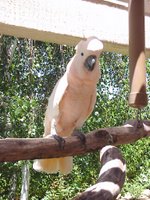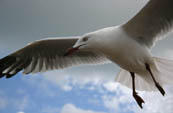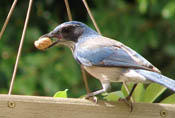 My pet birds and I had a good Christmas. However, we didn't spend all day together because I took a ride out to the desert ... Joshua Tree National Monument to be exact. I had an important reason to head that direction on Christmas ... to pay homage to my Mom. My mother died in 1998 and my stepdad took her ashes there because she enjoyed her many visits to Joshua Tree so much. I decided to spend some "time" with her this Christmas. It was a good decision.
My pet birds and I had a good Christmas. However, we didn't spend all day together because I took a ride out to the desert ... Joshua Tree National Monument to be exact. I had an important reason to head that direction on Christmas ... to pay homage to my Mom. My mother died in 1998 and my stepdad took her ashes there because she enjoyed her many visits to Joshua Tree so much. I decided to spend some "time" with her this Christmas. It was a good decision.It was a beautiful and peaceful day and the desert scenery was dramatic as usual. All in all, it was a nice way to spend part of Christmas Day ... it made me feel good.
On Christmas Eve I made sure all the backyard feeders were full. So before leaving for the desert I watched the birds as they devoured their meal. There were a lot of visitors on Christmas morning ... the Goldfinches, of course and also Scrub Jays, California Quail (a family of 11), White-crowned Sparrows, House Finches, California Towhee, Plain Titmouse and our Anna's and Black-chinned Hummingbirds. No spectacular or infrequent visitors ... just good, dear and dependable friends. Oh yes, I shouldn't forget to mention the Cotton-tail Rabbit who comes occasionally to nibble the grass. It's always a treat to watch it hop around the yard. The ground squirrels were missing but I know they'll be back soon.
I thought I might see a few birds at Joshua Tree but we couldn't stay long enough to sit and wait for some to appear. It takes about 3 hours each way to drive from coastal San Diego county. There was only a lone Crow sitting on a dead iron-wood tree. He flew off as we approached. Actually, it is a little easier to see wild birds at Joshua Tree near the water sources. It makes sense, of course, and has been my experience.
Christmas was a perfect day and the peaceful journey we took made the woes of the world seem a little less. Perhaps next Christmas they really will be.
















